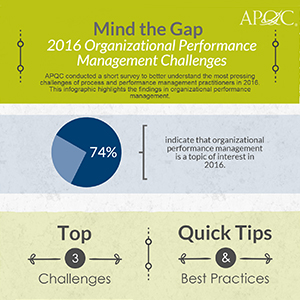
Struggling to Find the Right Measures?
By Holly Lyke-Ho-Gland
Over the past few years, an increasing number of companies have embarked on transformational changes, but research by APQC shows that only about 30 percent of those organizations are happy with their change program’s success. It is typically not the redesign plans that are the source of the frustrations; rather it is the implementation that is directly affected by organizational performance and change management practices. Simply put, most organizational innovations require a culture shift, and that means changing the norms and behaviors of employees and using performance measures to track success.
In December 2015, APQC conducted its annual survey to understand the common challenges and priorities of process and performance management practitioners in 2016. The survey covered a wide array of topics including organizational performance and change management.
What we found was unsurprising, given the current climate of innovation and redesign. Organizations continue to struggle with the perennial challenge of “establishing a performance culture” (i.e., ensuring widespread engagement and seamlessly-entwined organizational and individual performance). Furthermore, organizations emphasize the importance of identifying the “right” measures and making insights readily available to support decision-making. Similar trends appear when looking at the top challenges in change management — emphasizing the point that change management and organizational performance are intimately connected.
There are two core performance trends that emerge from the survey challenges:
- Picking the “right” measures.
- Communicating performance.
So, what can we do to address these challenges?
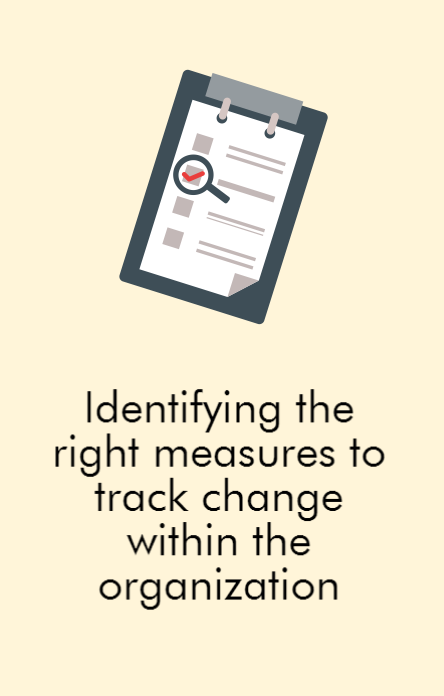
Picking the “Right” Measures
The first step for achieving effective performance management is identifying which measures are strategically aligned and relevant.
Strategic Alignment
Strategic alignment refers to how well measurements are linked to organizational objectives. Best-practice organizations use value stream analysis to align measures with strategic objectives. This entails leveraging senior management or a centralized team to analyze the value stream and link measures to high-impact business processes.
For example, Syngenta, a global agriculture company, requires process performance measures that are aligned to the organization’s goals. To that end, Syngenta uses a balanced scorecard with objectives that cascade down and align with its processes (to indicate how these things are achieved). Ultimately, it uses the same key performance indicators (KPIs) for strategic objectives and process performance.
Continued Relevancy
Just as important as picking the initial measure is to regularly re-evaluate measures to ensure that they are still relevant and accurate.
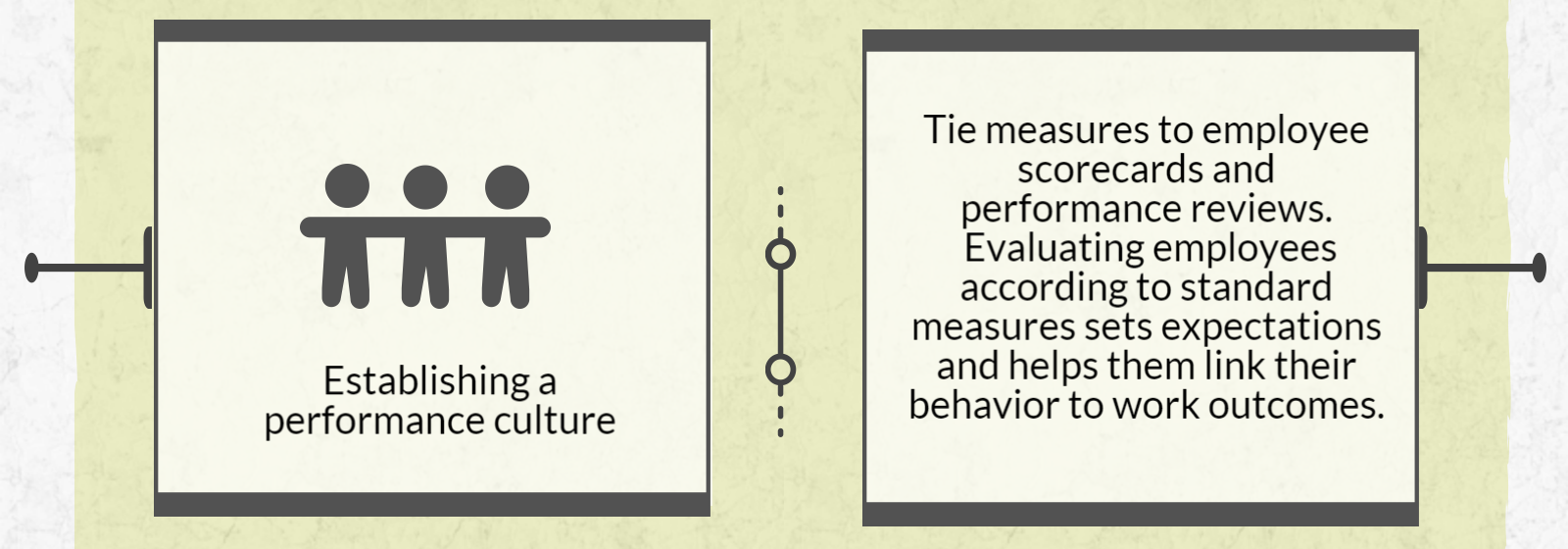
For example, Booz Allen sought to drive new business from intellectual capital developed in functional communities. In order to achieve this goal, the team developed measures through three stages of implementation. The first step in goal attainment was the development of its communities, measured by the volume of staff engaged in the communities. The second step was measured through the number of pilot programs created from the intellectual capital developed and shared in the communities. Finally, as these ideas become commercialized, the organization began measuring the amount of revenue generated from the functional communities. The point here is that Booz Allen carefully matched the measure to the goal of each phase of the initiative.
Behavioral Measures
Best-practice organizations also track macro measures to assess overall change efforts and use bottom-up measurements (e.g. new behaviors) to pinpoint the root causes of any issues. Because change management is often about changing norms and culture, it’s important to incorporate the desired behaviors into employee performance evaluations and rewards.
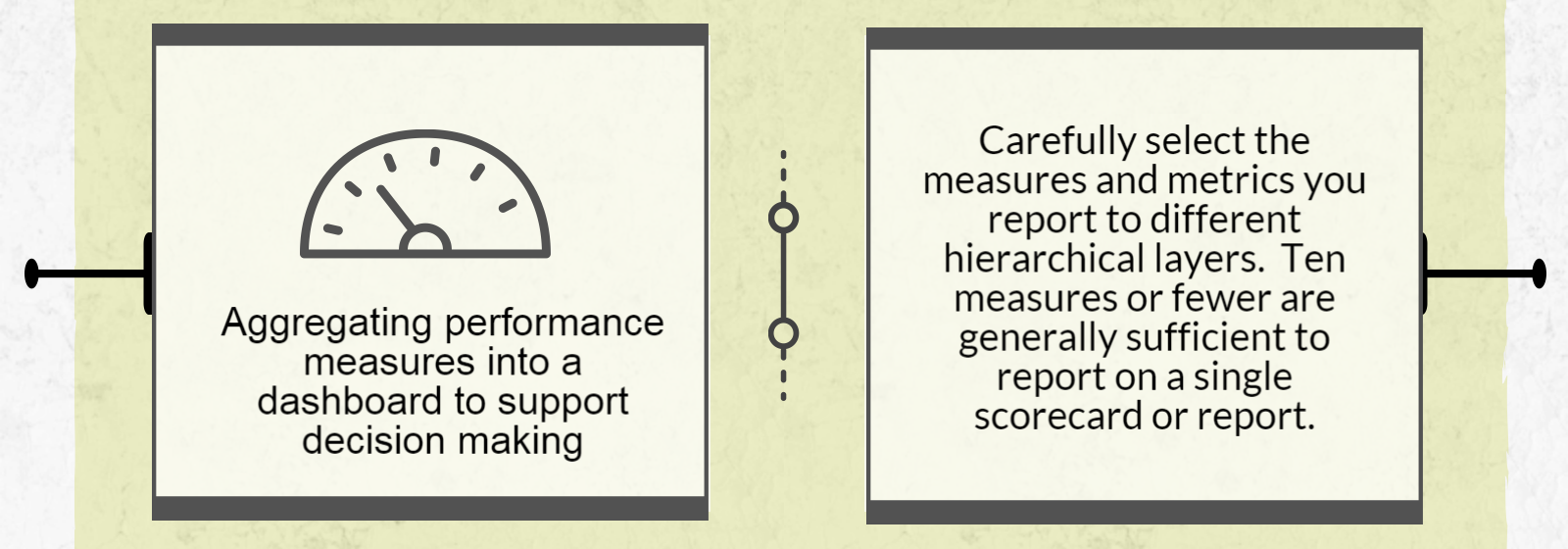
Communicating Performance
The second step in performance management is providing clear communication on insights in a way that provides context for decision makers.
Keep It Simple
Even if you’ve picked the right measures, their impact wanes if decision makers have to find the proverbial needle in a haystack (i.e., a cluttered dashboard). Typically, ten measures or fewer are sufficient to include on a single dashboard.
Provide Context
Even more important than reporting metrics to stakeholders is including context. Without context, an organization risks reacting too quickly to a shift in data and instituting unnecessary corrective measures. Providing context means looking at performance over time, between peer groups, and taking a broader look at which external factors affect the data. For example, adoption curves might decrease in the short term if there is an organizational change or if someone new takes over a role. This context is important and must be communicated to stakeholders to set expectations on what they are monitoring. This ensures that the stakeholders are aware of what the shift in their dashboards means, so they can track it and take corrective actions if the issue persists.
But What about Engagement?
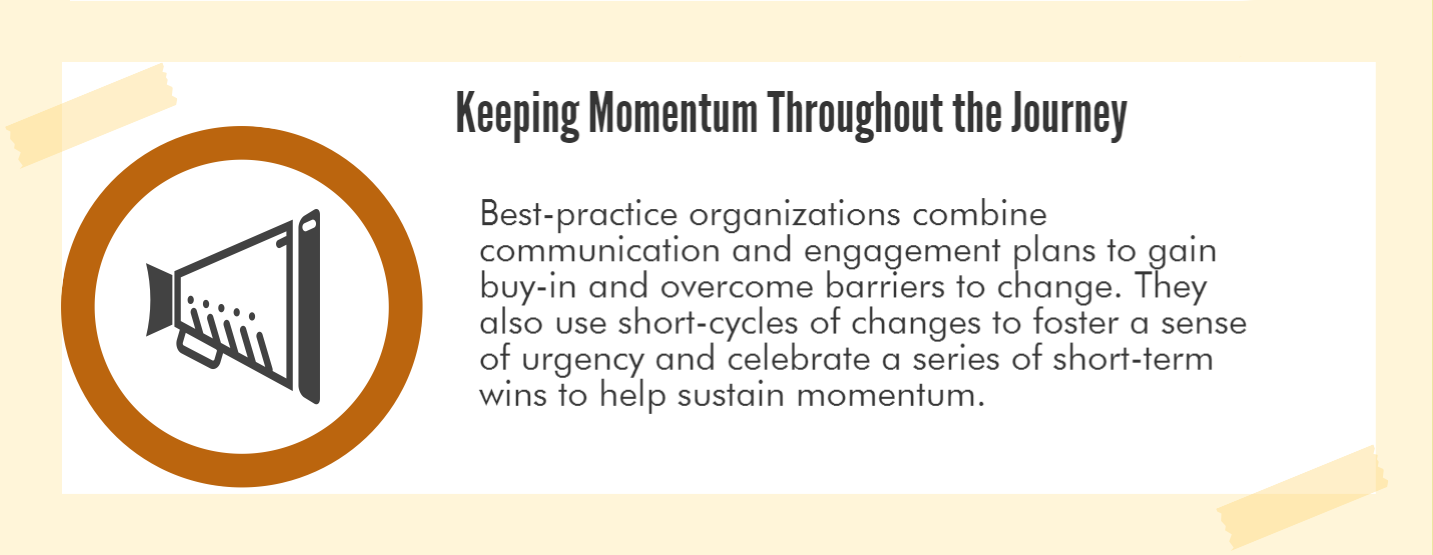
Best practice organizations use an array of communication and engagement tactics to build a performance culture and tap into the expertise of their employees to pick the right measures. Some of these tactics include:
- Enabling leadership to lead by providing it with the information and training it needs to communicate to its direct reports and lead by example. This includes information on performance measures and how employees directly influence organizational goals.
- Being deliberate about the purpose and target of communications. All information will not be relevant to everyone within the organization, and over-communication can result in people ignoring important information. This is true for both change efforts and performance measures.
- Engaging employees in the process. Use interactive communication tactics such as focus groups, social media, crowdsourcing, and employee-led training. This engagement approach not only helps create buy-in but also taps into the expertise and ideas of employees.
Though engagement and measurement can occur in a vacuum, together they help organizations establish the foundation they need to implement their objectives effectively. By engaging employees in the process, organizations can overcome several of the challenges found in this year’s survey, sow the seeds for a performance-focused culture, and pinpoint the “right” measures.
About BPI Partner APQC
APQC is a member-based nonprofit and one of the world’s leading proponents of business benchmarking, best practices, and knowledge management research. APQC's mission statement is to help organizations around the world improve productivity and quality by discovering effective methods of improvement, broadly disseminating findings, and connecting individuals with one another and with the knowledge they need to improve. APQC's research and expertise covers five core functional areas including Process and Performance Management, Financial Management, Human Capital Management, Knowledge Management, and Supply Chain Management. Visit Website »


